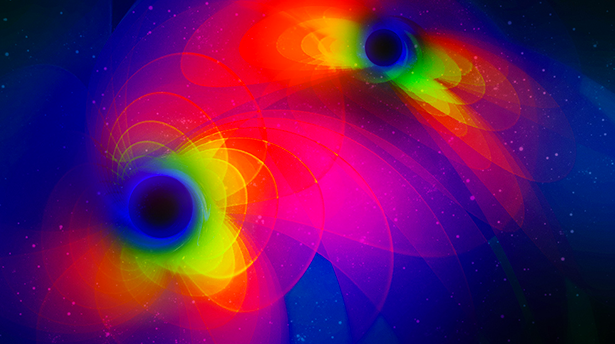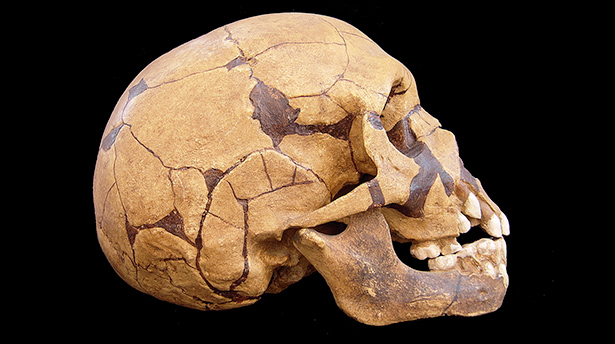LIGO Reports Second Black-Hole Merger
Four months after announcing their epoch-making discovery of gravitational waves — ripples in the fabric of space-time — the Laser Interferometer Gravitational-Wave Observatory (LIGO) team and Virgo collaborators announced today and reported in Physical Review Letters that they’ve detected a second gravitational-wave signal. LIGO spokesperson Gabriela Gonzalez called it “a promising start to mapping the populations of black holes in our universe.”
The signal, generated long ago by the space-quaking merger of two black holes, brushed the detectors on Dec. 26, 2015. It brings news that, 1.4 billion light-years away, a black hole with the mass of 14 suns combined with another of eight solar masses, forming a 21-solar-mass black hole. The remaining sun’s worth of energy was radiated as gravitational waves, whose existence Albert Einstein predicted 100 years ago.
In contrast to the loud “chirp” that LIGO detected last September, from a bigger black-hole merger, the second chirp was buried in background noise and required the full force of the team’s elaborate data analysis techniques to tease out. It was spotted in the noise with a process called matched filtering, in which templates of possible gravitational-wave signals are continuously compared with the data streams at LIGO’s two detectors, looking for matching hits.

With two detections now under their belt, LIGO scientists are beginning to gather statistics about the mysterious, invisible black holes that pervade the universe and influence the evolution of galaxies and the cosmos as a whole. Duncan Brown, LIGO member and professor of physics at Syracuse University, told Quanta that the two observations to date “tell us the black holes exist over a broad range of masses, from about seven to 36 times the mass of the sun. This is much broader than previously thought.”
In the coming years, Brown said, “LIGO’s observations will help tell us whether the black holes grew from the merger of small black holes, or if big black holes are formed in massive supernovae explosions of stars.”
SXS Collaboration
Update: Watch this simulation from the Simulating eXtreme Spacetime (SXS) Collaboration showing the inspiral and collision of the two black holes that generated the Dec. 26 gravitational-wave “chirp.”




